Dormant live roots ordered now will ship fall of 2025
Wild Yam, American–villosa (Dioscorea villosa) live root, organic
$7.00
Family: Yam (Dioscoraceae)
Hardy to Zones 5 to 9
(Colic Root, Rheumatism Root) Native to the southern, central and eastern portions of the US. Dioecious herbaceous perennial with prominently veined, heart-shaped leaves and a pencil-thin creeping rhizome. The vine will easily reach a height of 20 feet. This plant prefers rich, humus-laden soil and grows best in the dappled shade of woodland or shade garden. The plant will vigorously climb on trellis, fence or tree. Dioscorea villosa is considered official. Traditional usage of preparations made from the dried rhizome (TWM): antispasmodic for smooth tissues; stomach, bowel, infant colic or menstrual cramps. Cultivation: Rake back the mulch, make a narrow furrow in the soil, lay the root in parallel to the soil surface, cover with soil (about 2 inches deep), tamp securely, replace mulch over top of planting and pound in a stake to mark the spot. Emergence is in the spring. Space plants 2 to 3 feet apart.
Live Root, Certified Organically Grown
For more information on this plant, see “Growing At-Risk Medicinal Herbs” by Richo Cech
In stock

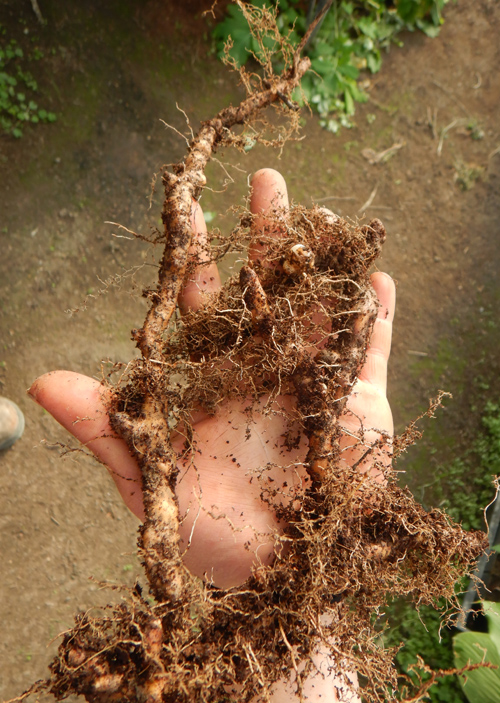
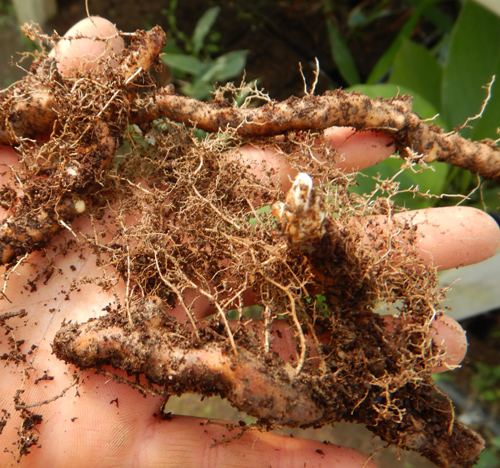
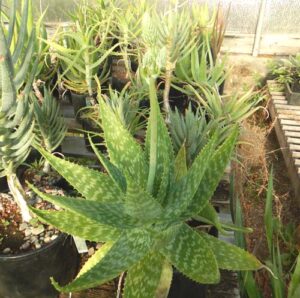
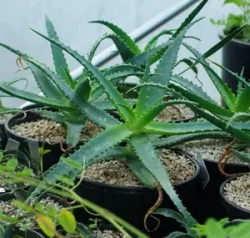
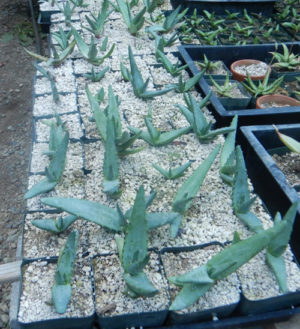
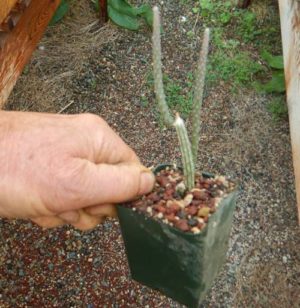
Alice Tavassoli –
Is this the plant used for making wild yam creams for menopause? Also, will it grow decently in zone 10a or 9b? SW Florida. Thank you so much!
Upvote if this was helpful (0) Downvote if this was not helpful (0) Watch Unwatch Flag for removal
Richo Cech –
Hello Alice, Thanks for contacting. Yes, Wild yam is native even to Florida so the warmer zones are fine. As for medicinal uses, we refer you to “Growing Plant Medicine Vol 2.”
All the best, Richo
Upvote if this was helpful (1) Downvote if this was not helpful (0) Flag for removal
Question
deenaclass –
Hey, Richo! We have some very squirrely squirrels that, I swear, follow me through the woodland and dig up every bare root plant I plant as their sweet treat for that week! Would you recommend heeling these in in large pots (with woodland duff + soil) until they get some above-ground growth or going for the direct woodland planting with some hardware cloth tacked over them? (Or something else?) Thank you!
Upvote if this was helpful (0) Downvote if this was not helpful (0) Watch Unwatch Flag for removal
Richo Cech –
Hey Deena, Thanks for staying in touch. I had the same problem with squirrels and saffron bulbs one year–mighty expensive squirrel food! You might find that the wild yam roots are an exception, as they are extremely hard and not sweet. Hardware cloth cages do work for bulbs and sensitive garden plants but seem inappropriate for wildland settings. Maybe put out some corn for the squirrels and plant your woodland goodies during their hibernation period. Yes, your idea about working up in pots and transplanting growing plants during the spring and summer when there is lots of other food around is a good one. Richo
Upvote if this was helpful (0) Downvote if this was not helpful (0) Flag for removal
deenaclass –
Thanks so much, Richo! Always appreciate your wisdom! Can’t wait to get my hands on some of these babies! 🙂
Upvote if this was helpful (0) Downvote if this was not helpful (0) Flag for removal
Richo Cech –
hi deena, when you’re intent on interplanting to maximize space utilization, it is nice to have climbers like this. richo
Upvote if this was helpful (2) Downvote if this was not helpful (0) Flag for removal
deenaclass –
Yes! We have woodland edge on all sides where I have lots of native azaleas, wild hydrangea and other bushes, so I figured I’d tuck these in with those and let them pick a tree or two to meander up! 😂
Upvote if this was helpful (0) Downvote if this was not helpful (0) Flag for removal
Question
Amanda May Elizabeth Kumher –
How long to do have to plant live roots after recieving them. Im trying to make a survival bug out bag of seeds and things to plant later. Is it possible to store them, and if so how would I and for how long?
Upvote if this was helpful (0) Downvote if this was not helpful (0) Watch Unwatch Flag for removal
Richo Cech –
The only place to store them is in the woodland or shade garden, covered by mulch. they’ll be happy there. r
Upvote if this was helpful (0) Downvote if this was not helpful (0) Flag for removal
Tammy Roth –
If i plant it under a willow tree will it choke it out?
Upvote if this was helpful (0) Downvote if this was not helpful (0) Flag for removal
Richo Cech –
hi tammy, thanks for writing! I don’t think there is any danger of that. richo
Upvote if this was helpful (0) Downvote if this was not helpful (0) Flag for removal